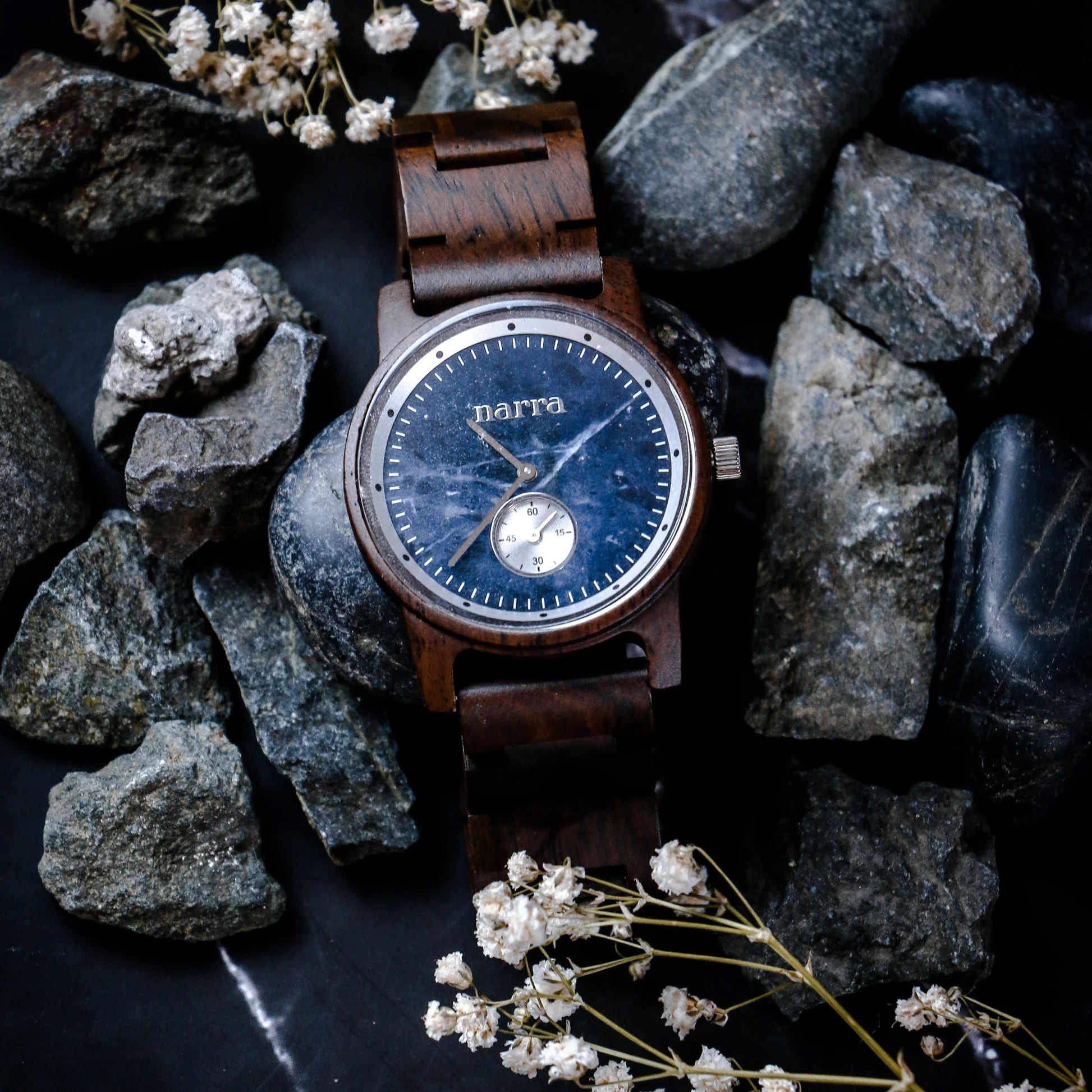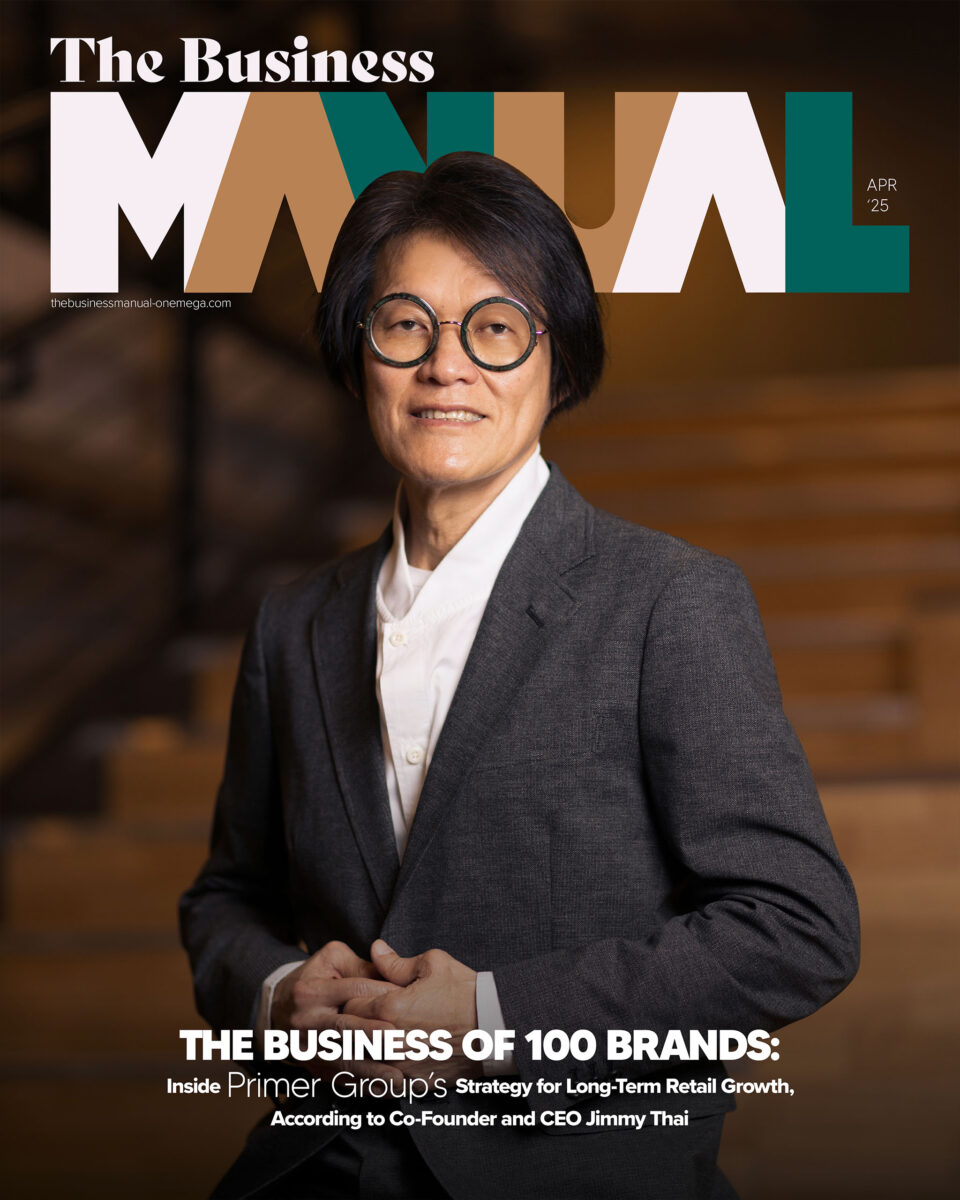How to Grow a College Side Hustle into a Business Earning 250K-350K in Sales a Month

Narra Wooden Watches owner Kelvin Yu shares his entrepreneurial journey, which started when he was just an undergraduate.
Kelvin Yu was only 22 years old when he started Narra Wooden Watches four years ago. The young entrepreneur, now 26 years old, started his business as a side hustle. He continues to run it as such until now, even as it earns him PHP250,000 to PHP350,000 in sales a month.
Kelvin shares his story with The Business Manual, including how he discovered wooden watches and why he chose to run his business solo. He also shares his decision on why he has kept Narra Wooden Watches as a side hustle for now.

Discovering Wooden Watches
Kelvin was on vacation in 2017 when he first encountered wooden watches. Intrigued by the product, he bought one as a souvenir and quickly fell in love with it.
“I received compliments when I wore it, and always got asked where to get one,” he says. “However, my friends would inevitably get disappointed when I told them that I got the wooden watch overseas and had no idea if there were any that could be found locally.”
He adds, “After encountering my first wooden watch, I thought to myself, why isn’t this available back home in the Philippines? It’s a beautiful product, it’s really unique, and I validated this from the compliments and conversations I’ve had with friends and strangers.”
Kelvin admits that prior to discovering wooden watches, he would never have imagined that watches could be made from wood. This made him realize that wooden watches could be a viable business idea.
“There was potential demand, with people who wanted or were intrigued about the product, and there was no major player that we knew of locally at the time that sold these watches, on top of me being passionate about the product,” the 26-year-old entrepreneur explains.
Because of all these, he decided to produce wooden watches in the Philippines himself.
Choosing to Become an Entrepreneur
For Kelvin, becoming a pioneer in wooden watches meant having to run his own business. Fortunately, this was something that he was familiar with.
“I grew up in a Chinese-Filipino community where it was a norm for families to have their own businesses, and for children to eventually inherit the family business or eventually work towards starting their own business,” he explains. “My father started his own business from scratch in the late 2000s, and I’d say these factors of community and family heavily influenced my decision to explore a business-related course in college and eventually dream of having my own ventures.”
Kelvin ended up taking Business Administration and Accountancy in the University of the Philippines and found himself exposed to many opportunities in a variety of sectors. While in UP, he gained experience in business by taking up internships in different fields, joining business case competitions, and forging connections with mentors and alumni.
“Through these, I found that entrepreneurship excited me more than climbing the corporate ladder, so I decided to pursue roles and experiences that were more entrepreneurial in nature,” he shares of his experiences in UP.
It was during his final year in college in 2018 that he began thinking about his future career. With many of his friends applying for jobs, Kelvin realized that he wanted something different. He wanted to run his own business in five to ten years.
At that point in time, he “wanted the opportunity to explore different career paths and learn from others by taking up a full time job.” This led him to start a business that could be run as a side hustle first for the next couple of years.
Thus, Narra Wooden Watches was born.

Starting Narra Wooden Watches as a Side Hustle
After deciding that he wanted to bring wooden watches to the Philippines and start a business as a side hustle, Kelvin went on to make his vision a reality. Armed with what he saved from internship salaries and from his allowance, he began.
“The initial plan was to bootstrap the business and start small, with minimal inventory and marketing budgets, just to first test the market and learn as much as I could,” says Kelvin. “I thought that if the venture failed, then I’d just consider the capital I spent, as a tuition fee in learning about business first-hand in the real world.”
Fortunately for Kelvin, the capital he needed to start the business was minimal. He was also able to meet suppliers “who were very accommodating and willing to help a young university student, like me, produce a small initial order of my own design.” Kelvin estimates that the capital he needed for his order ranged between PHP50,000 to PHP80,000.
“When I started, the biggest and most obvious investment I had to make was inventory,” he explains. “I found a supplier who could produce designs that I made on my laptop and sell to me at a reasonable price, which helped a lot for a university student without much capital, since I didn’t need to personally source equipment and materials to manufacture my watches.”
With his capital and supplier ready to go, the focus then shifted to the actual design of his wooden watches. Kelvin admits that he wasn’t really a watch collector when he first started. It was while researching for business ideas that he began to seriously explore different materials and the components of watchmaking. He even bought some cheap tools to tinker with the watches he already had.
As for the design of his watches, what Kelvin does is to look for different watch designs online. “I choose watches I like and identify common elements, which I try to incorporate in my designs,” the young entrepreneur shares of his design process. “I also take a look at designs I don’t like and understand what parts of the designs are common to them, which I’ll stay away from when designing my watches.”
Kelvin also makes it a point to research about different raw materials. He always asks the advice of his suppliers, who either validate his ideas or suggest alternatives. He notes that the process for a new design typically takes a month or two. Once the design is finalized and sent for production, it takes a further two or three months before the final product is ready to be sold.
What Sets Narra Wooden Watches Apart from Competition
While Kelvin acknowledges that the wooden watch niche is still small, he makes sure that his products stand out from the competition. Competition, for him, includes both regular watches and other wooden watch brands available.
“My unique selling proposition over regular watch brands is that our watches are made of wood and other unique materials,” the 26-year-old entrepreneur says. “Wooden watches still haven’t penetrated much of the Philippine market, so most Filipinos find watches made from wood as a special and unique product that immediately makes us stand out from regular watches.”
As for competing against other wooden watch brands, Kelvin tries to stand out in three key aspects. The first is by making his designs unique, stylish, and minimalist. Kelvin does this by utilizing different materials like mother of pearl and unique wood varieties. He has even explored marble and stone dials to give the watches a premium feel.
Second is by building a brand with a purpose. “Narra is a very Filipino symbol that can evoke pride and awe,” Kelvin explains. “We shouldn’t just sell watches, but sell a story and an idea that our customers can be proud of for participating in.”
Lastly, Kelvin makes sure that his business gives back to society to give his brand a deeper purpose. For every watch sold, Narra Wooden Watches donates to tree-planting efforts in the country.
“By building the business with these three things, I can create a sustainable brand that I hope one day can be a household name in the Philippine fashion industry,” he says proudly.
The Challenges of Going Solo
Running a business, even one that’s meant to be a side hustle, will always have its share of challenges. For Kelvin, many of the challenges he faces is due to the fact that he doesn’t have a business partner. Explaining his decision to run Narra Wooden Watches on his own, Kelvin says that he wanted to experience for himself what it was like to run a small business while handling all functions.
“I’m currently operating the business by myself alongside my girlfriend who helps me with marketing,” he explains. “It’s still being run as a side hustle since I also have a full-time job, so time management is really a big challenge for me.”
“Big sale days like 11.11 and 12.12 have me staying up late at night preparing orders, while having to also attend to problems at work. It does get overwhelming at times,” the young entrepreneur says. “Luckily, since I don’t have investors or partners, I’m only accountable to myself in this journey, and I can remind myself to take it slow, take breaks at times, so I don’t burnout.”
Still, he considers the time he has given his business as his biggest investment. “I was still a student when I conceptualized and launched the business, and I had to learn how to juggle academics, with the learning curve of running an online business,” he says. “I would spend weeknights sleeping late, watching videos on YouTube, and researching things about digital marketing, ecommerce, graphic design.”
Kelvin shares that he also spent some weekends trying out product photography. While he acknowledges that he could have outsourced many aspects of the business, he remained firm on wanting to learn how to do them on his own.
Advice for Young Entrepreneurs
Despite the challenges he’s had to face by starting a business at a young age, Kelvin says that “there are some things that business schools won’t teach you in the classroom, which you’ll only learn through real-life experience.”
Kelvin advises young aspiring entrepreneurs to first do their market research. He reminds everyone that what may seem to be a good idea for you may easily be criticized by others. “Talk to experts or more experienced individuals. Look for mentors,” he says. “Ask questions! Don’t be afraid to ask for help. Nobody knows everything.”
Kelvin likewise says that young entrepreneurs should learn to manage their risks. This includes determining how much you’re willing to risk in terms of capital and time. “If you don’t have a safety net, don’t risk all of your finances in your upcoming venture! In business there will always be risk, and it’s up to you to learn how to manage it,” he explains. “Do you have a plan B should your business fail? These are some practical things to think about before you start your business.”
Lastly, he reminds aspiring young entrepreneurs to always give back with a purpose. “I would encourage entrepreneurs to not only think of themselves and their profits when starting a business, but also thinking about other stakeholders in society and how their business can benefit these stakeholders, such as employees, suppliers, and the less fortunate,” he says.
Kelvin adds, “Businesses and the private sector can be powerful agents for development, and it would be very fulfilling to build your business not only for yourself, but for the benefit of others.”





